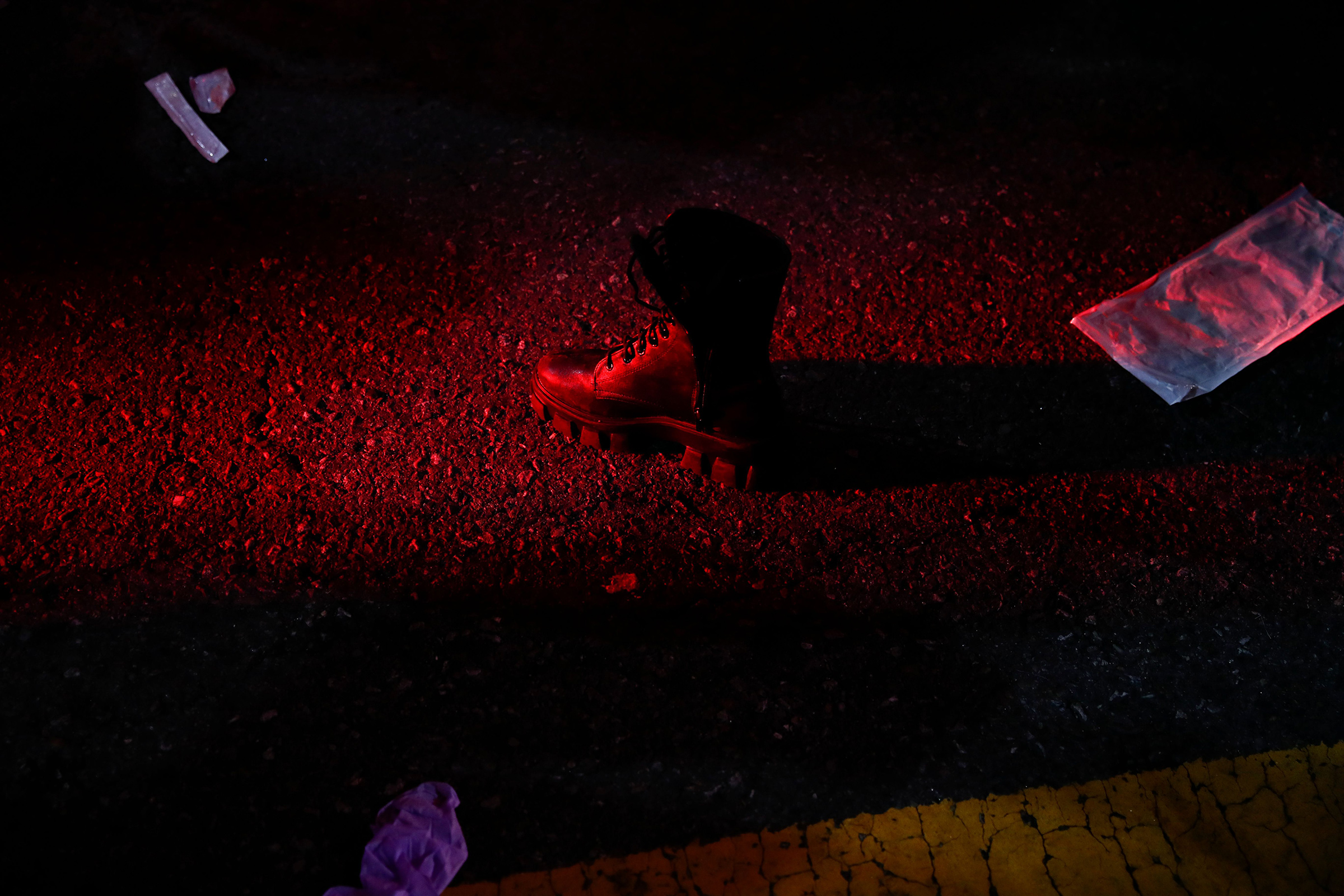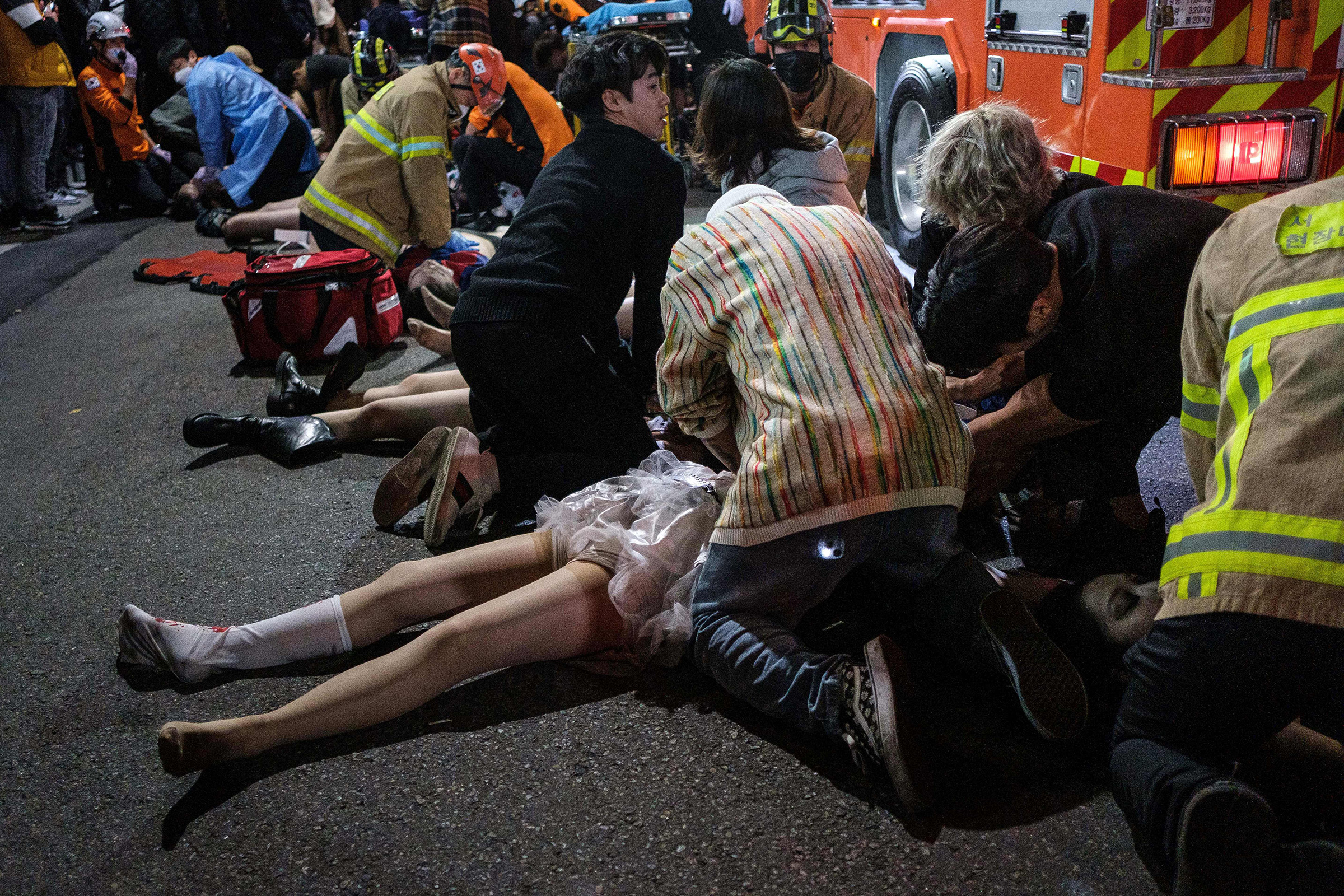What began as Halloween festivities in South Korea transformed into nightmarish scenes on Saturday evening as a crowd crush killed at least 153 people in a packed nightlife neighborhood of Seoul, the East Asian country’s capital.
The surge—the deadliest crowd crush in South Korean history—occurred in the Itaewon district, a vibrant LGBTQ hub. An estimated 100,000 people had gathered outside Itaewon’s array of clubs and bars to celebrate Halloween for the first time in three years, due to previous COVID-19 restrictions.
Costume-clad partygoers were trapped in chaotic scenes caused by the sheer volume of attendees. This resulted in a deadly crush at 10:20 p.m. local time, when many people were squashed in a narrow alleyway that could not accommodate the influx.
Below, why crowd crushes are so dangerous and what to do if caught in one.
How a crowd crush happens

Not understanding that there is a finite upper limit capacity to any confined space is the reason crowd crushes typically occur.
“Fundamentally, there’s a geometry that gives rise to high-density crowds, which in turn can give rise to current surges and progressive crowds relapse,” says G. Keith Still, a crowd safety expert and visiting professor of crowd science at the University of Suffolk. Still says that with each additional body in a crowd, the momentum increases to create an overpowering force.
Speaking of the Itaewon tragedy, he says the narrow alleyway was on a slope with two opposing roads and crowds packed on all three entry points to the junction. This, he says, is a typical geometry that has resulted in similar incidents and mass fatalities in the past.
In the U.S., the most recent crowd crush occurred in December 2021, when 10 people lost their lives during a Travis Scott performance at Astroworld, a Houston-based music festival.
Earlier this month, a crush at a soccer stadium in Indonesia left at least 125 dead in what was one of the world’s deadliest incidents at a sporting match.
Read More: Here’s Who Could Be Held Legally Liable for the Astroworld Tragedy
Why crowd crushes are so deadly
If large volumes of people clump together with a high level of personal contact, the density can often exceed the safety limit and this can result in people struggling to breathe even before any incidents occur. When people try to escape, any small movement is amplified by the crowd and it leads to an amplified wave, or domino effect, where attendees start to push against each other.

“A small movement can create very large effects. In a slope to an area, when any trips, slips, and falls occur, people pile on top of each other, then the problem starts,” says Still.
“As they try to get up, arms and legs get twisted together, and blood supply gets cut off, oxygen gets cut off, you can’t breathe, and it results from compressive restrictive asphyxia, people suffocate,” says Still. He adds that asphyxia is the most likely cause of death in these instances.
What to do if you’re in a crowd crush
Still says it is better to attend large gatherings with advanced situational awareness: “Have a look around you. Listen to the crowd noise. Understand that if you get in a high-density situation, it might be very difficult to get out. If it feels too crowded, if it doesn’t feel safe, just don’t go there.”
His advice to event organizers is to analyze the space, know its capacity, and manage flow into these areas to keep people safe; these risk assessments will save lives in the long run.
It’s very difficult to extricate yourself from a crowd crush, warns Still.

But if you find yourself in a crowd crush, the U.S. Centers for Disease Control and Prevention has advice. The health agency says to keep your hands in front of your chest “like a boxer,” maintain firm footing, and try to stay on your feet. If you fall down, the C.D.C. says, get up as soon as possible and when there’s a lull in move diagonally out of the crowd.
What are stampedes?
A stampede is a word that is often misused to describe crowd crushes, says Still. A stampede, he adds, is an event where people have the space to run away from a source of danger and this collective motion creates danger. “Very rarely are stampedes the cause of incidents. There might be a fight or flight [response] where people that are running away from the threat, an active shooter, for instance, and have got space to move,” Still explains.
A crush is what happened in Seoul on Saturday. But stampedes have also caused deadly tragedies in recent years.
In September 2015, at least 1,470 people were killed during hajj, an Islamic pilgrimage in Saudi Arabia, as the result of both a crush and stampede. Prior to the 2015 tragedy, there had been several crushes or stampedes during the annual pilgrimage.
More Must-Reads from TIME
- Why Trump’s Message Worked on Latino Men
- What Trump’s Win Could Mean for Housing
- The 100 Must-Read Books of 2024
- Sleep Doctors Share the 1 Tip That’s Changed Their Lives
- Column: Let’s Bring Back Romance
- What It’s Like to Have Long COVID As a Kid
- FX’s Say Nothing Is the Must-Watch Political Thriller of 2024
- Merle Bombardieri Is Helping People Make the Baby Decision
Write to Armani Syed at armani.syed@time.com